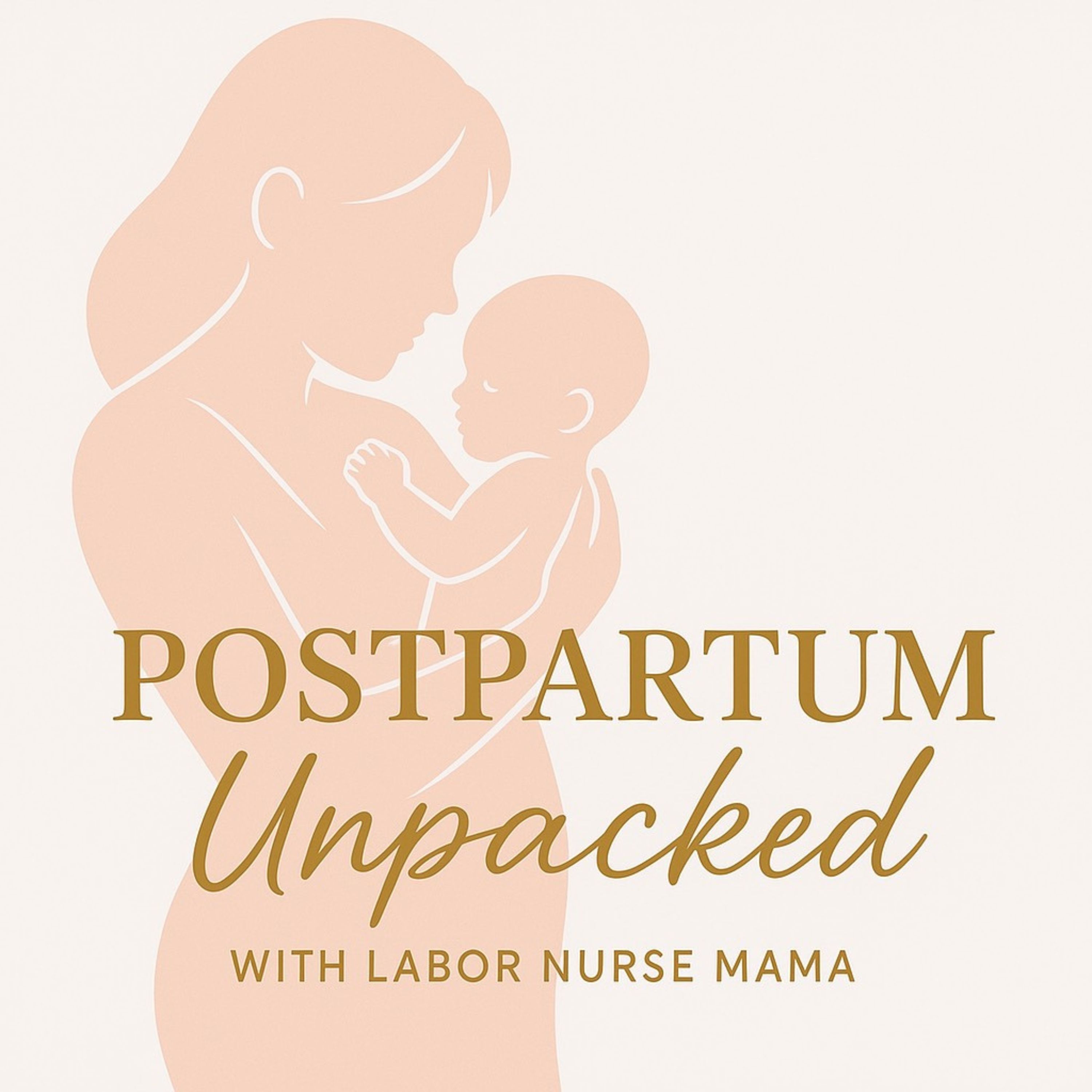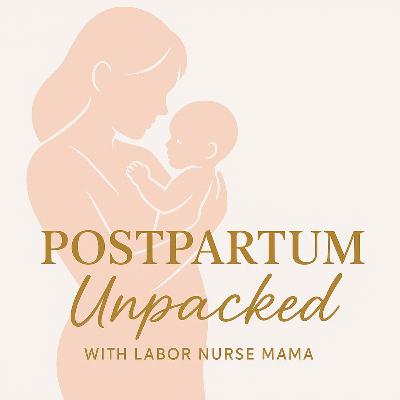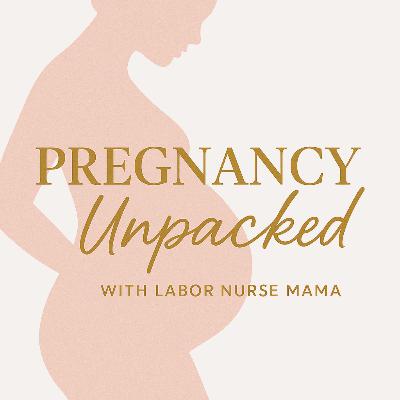The Truth About Lochia- What Your Postpartum Bleeding Really Means | 220
Description
In this episode of Postpartum Unpacked, Trish gets into the often-overlooked topic of lochia - postpartum bleeding. Trish breaks down what lochia really means, why it happens, and how to navigate it with confidence. Drawing from her experience as a labor nurse, she explains the healing process after birth, shares practical tips for comfort, and emphasizes listening to your body. Whether you're a new mom or preparing for postpartum, this episode reassures you that lochia is a normal part of recovery and a sign of your body's incredible strength.
Key Topics Discussed
- Understanding Lochia: Lochia is your body's natural healing process after the placenta detaches, leaving a large wound (about the size of a dinner plate) in the uterus. It involves shedding blood, tissue, and leftover cells as the uterus shrinks back to its pre-pregnancy size. Trish describes lochia as the visible part of this internal cleanup.
The Three Stages of Lochia:
- Lochia Rubra (Days 1-4, up to 7): Bright red, heavy bleeding similar to a period. Small clots are common, especially after standing or nursing (which releases oxytocin and helps the uterus contract).
- Lochia Serosa (Days 5-10, up to 2 weeks): Lighter flow turning pinkish-brown. Clots should be rare and very small, indicating the uterus is contracting effectively.
- Lochia Alba (Week 2 to 6+): Yellowish or whitish discharge with mucus. This signals the final stages of wound closure.
Note: Everyone's body is different, so timelines may vary. If bleeding suddenly returns to bright red after lightening, it's a signal to rest - your body is saying you've overdone it.
Practical Tips for Managing Lochia and Postpartum Comfort:
- Underwear and Pads: Embrace hospital mesh panties or disposable incontinence underwear in the early days. Use giant postpartum pads (ask for extras at the hospital).
- No Internal Products: Skip tampons or menstrual cups until cleared by your provider - your cervix is open, and infection risk is high.
- Peri Bottle: Fill with warm water to gently clean the area instead of wiping. Pat dry for comfort. Add witch hazel or aloe if approved.
- Sitz Bath: Use warm water (with Epsom salts or safe herbal mixes) in a portable basin on the toilet. Great for soothing stitches, swelling, hemorrhoids, or general freshness.
- Witch Hazel Pads (Tucks Pads): Refrigerate and line your pad with them for cooling relief from soreness, swelling, or hemorrhoids.
- Nutrition and Hydration: Stay hydrated and eat iron-rich foods to rebuild blood volume and support healing.
When to Call Your Provider: While lochia varies, watch for red flags and seek help immediately if:
- You're soaking a pad in an hour or less.
- Passing clots larger than a golf ball (notify even if smaller ones occur after lying down).
- Bleeding has a foul smell (beyond normal).
- You feel dizzy, weak, or short of breath.
- Persistent bright red bleeding after resting, especially weeks in.
Trust your instincts - better to report concerns and prevent issues like hemorrhage or infection.
More from this episode:
Postpartum Recovery Essentials Amazon List
Helpful Timestamps:
- 00:00 Introduction to Postpartum Bleeding
- 00:53 Understanding Lochia: The Healing Process
- 01:44 Stages of Lochia: What to Expect
- 04:16 Practical Tips for Managing Postpartum Bleeding
- 09:11 When to Call Your Provider
- 10:59 Recap and Final Thoughts
Join the #1 Birth Course for Confident Birth!
Over 15,000 women have used our classes to prepare for birth with the knowledge and tools provided by a Labor Nurse.
💻 Self-paced and lifetime access
👩🏻⚕️ Perfect for all births- hospital, birth center, or home!
🎧 Includes birth meditations and prayers.
🌍 Women all over the world have loved our classes.
✅ Start now
Join The Birthpod ™ course
Join The Calm Labor Confident Birth Course
Connect w/ Trish:
For more pregnancy & birth education, subscribe to The Birth Experience on Spotify, Apple Podcasts, or wherever you listen to podcasts.








